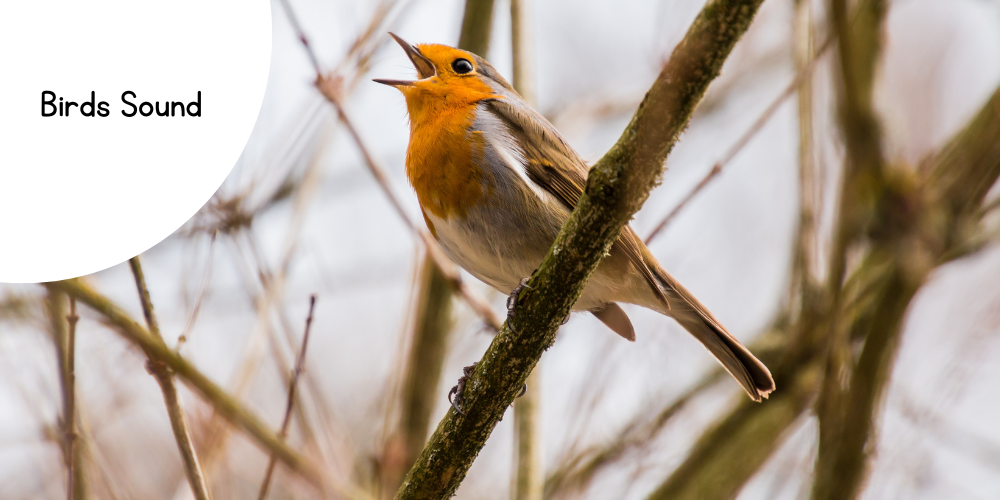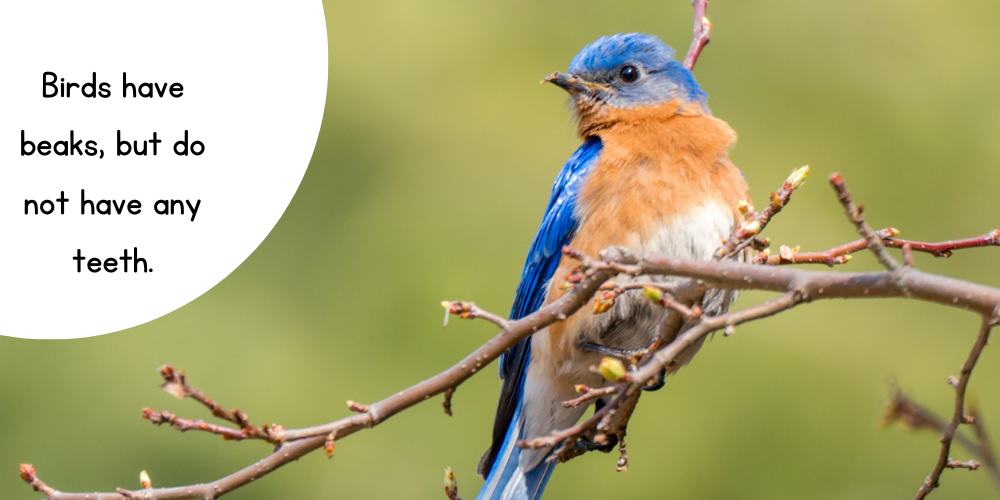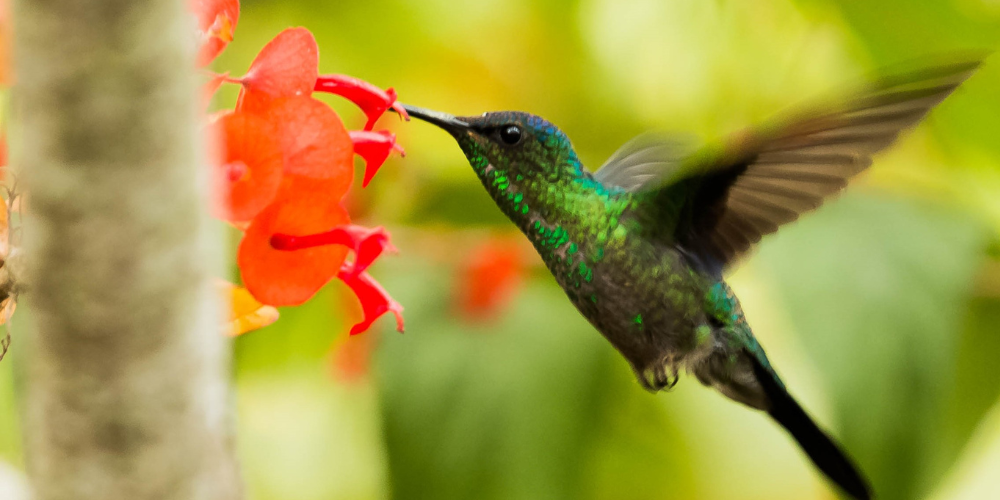Tit bird are small, energetic songbirds found primarily in the Northern Hemisphere, belonging to the Paridae family. Known for their vibrant colors, such as yellow, blue, and green, and distinctive markings like black stripes or caps, these birds are a favorite among bird watchers. Common species include the Blue Tit, Great Tit, and Coal Tit, each recognized for its lively behavior, intelligence, and adaptability. Tit birds are omnivorous, feeding on insects, seeds, and fruits, and are frequent visitors to bird feeders, especially during winter. Their cheerful songs and social nature make them a delightful presence in gardens, forests, and urban areas alike.

Birds In The Tit Family
The Tit family (Paridae) is a diverse group of small, lively birds known for their intelligence, adaptability, and vibrant plumage. Found mainly in the Northern Hemisphere, including regions of Europe, Asia, and North America, members of this family thrive in various habitats, from dense forests to urban gardens. Popular species in the Tit family include the Great Tit, Blue Tit, Coal Tit, and Willow Tit, each with unique characteristics like colorful feathers, distinctive calls, and impressive nesting behaviors.
These birds are primarily insectivorous but often visit bird feeders, especially in colder months, to consume seeds and nuts. Their social, inquisitive nature and ability to quickly adapt to their surroundings make them a favorite among bird watchers worldwide.
Overview of the Tit Bird
Tit birds are a group of small passerine birds found mainly in the Northern Hemisphere, including regions of Europe, Asia, and North America. Known for their active foraging habits and their ability to adapt to various environments, Tit birds are often spotted flitting through forests, gardens, and even urban areas.
Parus caeruleus, commonly known as the Blue Tit, is one of the most recognized members of this bird family. Tits are small, typically ranging between 10-15 cm in length, and are known for their vibrant colors, such as yellow, blue, and green, as well as distinctive black markings. Their vocalizations are high-pitched and cheerful, making them a delightful presence in many ecosystems.
Pair Of Tit Bird
A pair of Tit bird often forms strong bonds, especially during the breeding season, when they work together to build nests and raise their young. These small, social birds are known for their cooperative behaviors, with both the male and female sharing responsibilities like gathering nesting materials and feeding their chicks.
In many species, such as the Great Tit and Blue Tit, pairs stay close to each other year-round, communicating through a range of calls and songs. Their synchronized efforts not only strengthen their bond but also improve their chances of successfully raising a brood, showcasing their dedication to family life.
White Tit Bird
The White Tit bird is a rare and striking member of the Paridae family, easily recognized by its predominantly white plumage, which sets it apart from other tit species known for their more colorful appearances. Although white coloration is less common among tit birds, it can be observed in certain genetic variations or in colder regions where lighter colors provide better camouflage. Like other tit species, the White Tit is highly active, feeding on insects, seeds, and nuts. Its bright appearance and lively behavior make it a captivating sight for bird watchers, especially in habitats ranging from woodlands to gardens.

Types of Tit Birds
Tit birds are classified into several species, and each has its unique characteristics. Here’s a closer look at some of the most notable species:
1. Long-Tailed Tit Bird
The Long-tailed Tit bird is known for its distinctive, elongated tail, which can be nearly as long as its body. These birds have a fluffy appearance with pinkish-white plumage and are often found in woodland areas. They are social creatures and can be seen moving in flocks during the colder months.
2. Coal Tit Bird
The Coal Tit is a small bird with a black head, white cheeks, and a slender body. Found primarily in woodlands and coniferous forests, they are also regular visitors to bird feeders. They are similar in size to the Great Tit but can be distinguished by their duller plumage and smaller size. Their song is a simple but recognizable “tee-tee-tee.”
3. Tom Tit Bird
The Tom Tit is less commonly known but is another fascinating member of the Tit family. This bird is notable for its behavior and foraging patterns, often seen hopping from branch to branch in search of insects and seeds.
4. Willow Tit Bird
The Willow Tit bird is an endangered species, mostly found in Europe and Asia. They prefer damp woodland environments and are known for their relatively plain appearance, with muted brown and grey plumage. Despite their lack of bright colors, their survival strategies and adaptability make them a species of interest to conservationists.
5. Crested Tit Bird
The Crested Tit Bird is easily recognizable due to the tuft of feathers on its head. These birds are usually found in pine forests and are more commonly seen in regions like Scotland. Their crests give them a unique look among the Tit family and make them a favorite among bird watchers.
Snow Tit Bird
The Snow Tit (Leptopoecile shiquensis) is a small, charming bird native to the high-altitude regions of the Himalayas and surrounding mountainous areas. Characterized by its predominantly white and grey plumage, the Snow Tit blends seamlessly into its snowy environment, making it well-adapted to its harsh habitat. These birds are known for their energetic foraging behavior, often seen flitting about in search of insects and seeds among rocky crevices and alpine shrubs.
With a distinctive call that echoes through the mountains, the Snow Tit is not only a delightful sight for bird enthusiasts but also plays a vital role in the ecosystem by helping to control insect populations in its fragile alpine habitat.

Bird Named For A Titan
The Vorombe titan, often referred to as the bird named for a titan, is an extinct species that once roamed the island of Madagascar. Known as the largest bird to have ever existed, Vorombe titan could reach heights of over ten feet, resembling a giant ostrich. Its name, derived from the Malagasy word for “giant” and the Greek word for “titan,” reflects both its impressive size and its place in the avian lineage.
This flightless bird had powerful legs and was likely herbivorous, feeding on a variety of vegetation. The discovery of Vorombe titan has fascinated paleontologists, providing insights into the unique evolutionary pathways of birds on isolated islands and the factors contributing to their extinction.
Great Tits Bird
The Great Tit (Parus major) is a highly recognizable and beloved bird across Europe and parts of Asia, known for its striking black and yellow plumage and distinctive black cap. These medium-sized songbirds are highly adaptable, thriving in various habitats, including woodlands, gardens, and urban areas.
Great Tits are particularly noted for their intelligence and problem-solving abilities, often seen using tools to access food. Their cheerful, varied songs—ranging from simple calls to complex melodies—play a crucial role in communication, especially during the breeding season. Social and curious, Great Tits frequently visit bird feeders, making them a favorite among birdwatchers and a common sight in many backyards.
Brown Tit Bird
The Brown Tit bird is a less common name that often refers to various species within the tit family that exhibit predominantly brown plumage. These birds typically inhabit woodland areas, gardens, and scrublands, where their muted colors provide effective camouflage among the branches and foliage. Notable examples include the Marsh Tit and the Willow Tit, both of which showcase shades of brown and grey.
Brown Tits are known for their lively behavior, often foraging for insects, seeds, and berries. Their calls and songs are distinctive, adding to the rich soundscape of their natural habitats. While they may not be as visually striking as their more colorful relatives, Brown Tits play an essential role in their ecosystems and are cherished by birdwatchers for their unique behaviors and adaptability.
Red Tit Bird
The Red Tit bird, commonly known as the Red-fronted Tit (Parus rubrifrons), is a small and vibrant member of the tit family found primarily in the mountainous regions of Central Asia. Characterized by its striking red forehead and a combination of grey and white plumage, this bird is often spotted in coniferous forests and shrublands, where it flits about in search of insects and seeds.
The Red Tit is known for its lively and acrobatic foraging behavior, often hanging upside down to access food. Its melodious calls and songs add to the enchanting atmosphere of its habitat, making it a delightful sight for bird enthusiasts and a vital part of its ecosystem, helping to control insect populations and disperse seeds.

Oriental Tits
Oriental Tits refer to several species of tit birds found across Asia, particularly in regions like China, Japan, and Southeast Asia. Notable examples include the Oriental Blue Tit and the Japanese Tit, each exhibiting vibrant plumage and distinctive markings that vary by species. These birds are known for their energetic behavior, often seen foraging in flocks, flitting among branches, and adeptly navigating their environments to find insects, seeds, and fruits.
With their melodious calls and social nature, Oriental Tits are a delight to observe in their natural habitats, which range from woodlands to gardens. Their adaptability and varied diets allow them to thrive in diverse ecosystems, making them an integral part of the avian community in Asia.
Bird Called Tit
The term “bird called tit” generally refers to the various species within the Tit family (Paridae), which includes well-known birds such as the Great Tit, Blue Tit, and Coal Tit. These small, lively birds are characterized by their distinctive plumage, social behavior, and melodious songs. Commonly found in Europe, Asia, and parts of North America, tit birds thrive in diverse habitats, including forests, gardens, and urban areas. They are known for their intelligence and adaptability, often seen foraging for insects and seeds. Their energetic presence and cheerful calls make them a favorite among birdwatchers and nature enthusiasts, highlighting their importance in ecosystems as both foragers and seed dispersers.
Good Black Tits
The phrase “good black tits” typically refers to the Black Tit, a small bird found primarily in parts of Asia, particularly in forested regions. Known for its striking appearance, the Black Tit features glossy black plumage with contrasting white markings, making it a visually captivating member of the tit family. These birds are often seen flitting through trees, foraging for insects, seeds, and fruits, showcasing their agile and lively nature.
Their vocalizations include a variety of calls that add to the rich soundscape of their habitats. While not as commonly recognized as some of their colorful relatives, Black Tits play a vital role in their ecosystems, contributing to pest control and seed dispersal while providing joy to birdwatchers who appreciate their unique charm.
Cher Titties
Cher Titties is a playful and bold expression that combines a sense of nostalgia with an edgy twist. It could evoke imagery of glamour, confidence, and a carefree attitude, reminiscent of Cher’s iconic style and bold personality. Whether it’s used in a humorous, light-hearted context or to make a statement about self-expression, it speaks to a blend of sass and empowerment, encouraging people to embrace their individuality with confidence and a touch of rebelliousness.
White Cheeked
White-cheeked” brings to mind a striking and elegant image, possibly referring to a distinctive physical trait or a metaphor for purity, innocence, or refinement. In nature, it could describe a bird or animal with contrasting facial markings, emphasizing the beauty of its natural design. As a metaphor, it might evoke a sense of calmness, softness, or a delicate touch, symbolizing clarity or an untouched quality. The phrase carries a sense of quiet grace, drawing attention to the subtle yet captivating characteristics of something or someone.

Nesting Birds
Nesting birds are a beautiful symbol of life, renewal, and the instinctual drive to nurture and protect. As they gather materials like twigs, leaves, and feathers to create their nests, they demonstrate a delicate yet determined effort to build a safe haven for their eggs and future offspring. The sight of birds nesting often evokes feelings of warmth and continuity, as it reflects the cyclical nature of life and the care that all species take to ensure the survival of the next generation. Whether perched high in trees or hidden in the crevices of buildings, nesting birds are a reminder of nature’s quiet perseverance and the bonds that connect all living things.
Great Tit Lived
The great tit, a small but vibrant songbird, has lived and thrived across Europe, Asia, and parts of North Africa, known for its striking black, white, and yellow plumage. Adaptable and resilient, the great tit has successfully navigated various habitats, from woodlands and forests to urban gardens, where it readily interacts with human environments. Its distinctive calls and melodies bring life to the natural world, while its curious nature allows it to cleverly solve problems, especially when foraging for food. Over time, the great tit has become a symbol of resourcefulness and adaptability, living in harmony with changing landscapes while continuing to charm birdwatchers and nature lovers alike.
Yellow Browed Tit
The yellow-browed tit is a small, charming bird found in the forests of East Asia, recognized by its subtle yellow eyebrow stripe that contrasts with its olive-green body. Its delicate size and lively movements make it a captivating sight as it flits among branches in search of insects and seeds. Though it may be tiny, this bird is highly active, its soft calls adding a melodic note to the forest ambiance. The yellow-browed tit’s presence reflects the rich biodiversity of its habitat, and its bright markings and energetic behavior make it a beloved subject for birdwatchers in the regions it inhabits.
Lower Classifications and Species Diversity
There are numerous types of Tit birds beyond those mentioned above, such as:
- Yellow Tit Bird: Known for its bright yellow coloring, this species can be found in parts of Asia.
- Crow Tit Bird: Not to be confused with the actual crow, the Crow Tit has a more modest appearance but shares some behavioral traits with its namesake.
- Korean Crow Tit Bird: Indigenous to Korea, this species is also part of the Tit family and stands out due to its distinct habitat preferences.
- Grey Tit Bird: These birds have a sleek grey appearance and are known for their calm demeanor.

Diet and Feeding Habits of Tit Birds
Tit birds are omnivorous, feeding primarily on insects, seeds, and fruit. Their diet changes depending on the season. During the spring and summer months, they mainly consume insects such as caterpillars, beetles, and spiders. In the winter, their diet shifts toward seeds, berries, and nuts.
Many Tit birds are frequent visitors to bird feeders. They are particularly fond of sunflower seeds and peanuts, which provide them with the necessary fats to survive the colder months. Garden enthusiasts often enjoy watching garden birds like the Great Tit or the Blue Tit during the winter as they visit feeders.
Breeding and Nesting Behavior
Tit birds are cavity nesters, meaning they build their nests in holes in trees or man-made structures like nest boxes. The Blue Tit Bird, for example, is famous for its elaborate nest-building skills, often creating nests from moss, feathers, and wool.
Most species lay between 6-12 eggs per breeding season, with incubation periods lasting approximately two weeks. The breeding season typically occurs in spring, during which male Tit birds will sing loudly to attract a mate.
The Blue Tit Bird nesting is one of the most closely observed among bird enthusiasts due to its colorful display of parenting skills and protection of the nest from predators.
Sounds and Communication
Tit birds are known for their vocal abilities. They have a wide range of calls and songs that serve various purposes, such as attracting mates, deterring rivals, and signaling the presence of predators.
- The Great Tit Bird, for instance, has a two-syllable “teacher-teacher” call that is easily identifiable.
- The Marsh Tit Bird is another example, with a softer “pitchoo” sound that resonates through the woodland areas it inhabits.
These calls vary in tone and pitch depending on the species, providing a unique identification method for bird watchers.

Tit Bird Species Across Regions
Tit birds can be found across different parts of the world. Some examples include:
- Eurasian Blue Tit: Found throughout Europe and parts of Western Asia, this species is known for its blue and yellow plumage.
- American Tit Bird: Also known as the Tufted Titmouse, this species is primarily found in North America. It has a grey body, white face, and a tufted crest similar to the Crested Tit.
Many tit bird species have adapted to their environments remarkably well, from North Africa to Central Asia. For example, the Yellow-Browed Tit can be found in Asia, while the Great Tit has lived in diverse regions, ranging from urban environments to dense forests.
Tit Birds in Popular Culture and Science
Due to their widespread distribution and easy identification, Tit birds have become a subject of study in various ecological and behavioral research. Some fascinating trivia includes:
- Vorombe Titan Bird: Although not related to the Tit family, this extinct species shares the “Titan” nomenclature. The Vorombe Titan was the largest bird to have ever existed, reaching heights over three meters.
- The Falco Bird Titan, a species named for its strength and size, also shares some similarities with Tit birds in their adaptive foraging strategies.
Final Thoughts
Tit birds are remarkable for their vibrant colors, adaptability, and lively personalities. Whether you are observing them in your garden or studying them in the wild, their unique behaviors and traits make them a favorite among ornithologists and casual bird watchers alike.
From species like the Blue Tit and Great Tit to lesser-known birds like the Tom Tit and Willow Tit, these birds offer endless fascination. The Paridae family provides much more than meets the eye, and each species has a role to play in the ecosystem.

By understanding the various types of Tit birds, their diet, breeding habits, and vocalizations, we gain insight into the intricate lives of these small but mighty birds.


